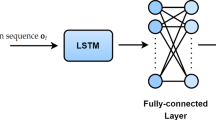Abstract
This paper presents an approach to artificial intelligence planning based on linear temporal logic (LTL). A simple and easy-to-use planning language is described, Planning Domain Description Language with control Knowledge (PDDL-K), which allows one to specify a planning problem together with heuristic information that can be of help for both pruning the search space and finding better quality plans. The semantics of the language is given in terms of a translation into a set of LTL formulae. Planning is then reduced to “executing” the LTL encoding, i.e. to model search in LTL. The feasibility of the approach has been successfully tested by means of the system Pdk, an implementation of the proposed method.
Similar content being viewed by others
References
Allen, J. (1991a). Planning as temporal reasoning. In Proceedings of the second Int. conf. on principles of knowledge representation and reasoning (KR-91). pp. 3–14.
Allen, J. F. (1991b). Temporal reasoning and planning. In J. F. Allen, H. A. Kautz, R. N. Pelavin, & J. D. Tenenberg (Eds.), Reasoning about plans (pp. 1–68). Los Altos, CA: Morgan Kaufmann Publishers Inc.
Bacchus, F. and Kabanza, F. (1996). Planning for temporally extended goals. In Proceedings of the 13th national conf. on artificial intelligence (AAAI-96). pp. 1215–1222.
Bacchus, F., & Kabanza, F. (2000). ‘Using temporal logics to express earch control knowledge for planning’. Artificial Intelligence, 16, 123–191.
Bacchus, F., & Ady, M. (1999). Precondition control. Manuscript.
Baral, C. (2003). Knowledge representation, reasoning, and declarative problem solving with answer sets. Cambridge: Cambridge University Press.
Barringer, H., Fisher, M., Gabbay, D., Gough, G., & Owens, R. (1989). MetateM: a framework for programming in temporal logic’. In Proceedings of REX workshop on stepwise refinement of distributed systems: models, formalisms, correctness, Vol. 430 of LNCS. pp. 94–129.
Barringer, H., Fisher, M., Gabbay, D., & Hunter, A. (1991). Meta-reasoning in executable temporal logic. In Proceedings of the second int. conf. on principles of knowledge representation and reasoning (KR-91). pp. 40–49.
Bibel, W. (1997). Let’s plan it deductively. In Proceedings of the 15th int. joint conf. on artificial intelligence (IJCAI-97), Vol. 2. pp. 1549–1562.
Bylander, T. (1991). Complexity results for planning. In Proceedingsof the 12th int. joint conf. on artificial intelligence (IJCAI-91). pp. 274–279.
Calvanese, D., De Giacomo, G., & Vardi, M. Y. (2002). Reasoning about actions and planning in LTL action theories. In Proceedings of the 8th int. conf. on principles of knowledge representation and reasoning (KR 2002). pp. 593–602.
Cerrito, S., & Cialdea Mayer, M. (1998). Using linear temporal logic to model and solve planning problems. In F. Giunghiglia (Ed.), Proceedings of the 8th int.conf. on artificial intelligence: methodology, systems, applications (AIMSA’98). pp. 141–152.
Cesta, A., & Oddi, A. (1996). DDL.1: a formal description of a constraint representaton language for physical domains. In M. Ghallab, & A. Milani (Eds.), New direction in AI planning, pp. 341–352. IOS Press.
Cialdea Mayer, M., Orlandini, A., Balestreri, G., & Limongelli, C. (2000). A planner fully based on linear time logic. In S. Chien, S. Kambhampati, & C. Knoblock (Eds.), Proceedings of the 5th int. conf. on artificial intelligence planning and scheduling (AIPS-2000). pp. 347–354.
Doherty P., Kvarnström J. (2001). TALplanner: a temporal logic based planner. AI Magazine 22: 95–102
Erol, K., Hendler, J., & Nau, D. S. (1994). HTN planning: complexity and expressivity. In Proceedings of the 12th national conf. on artificial intelligence (AAAI-94). pp. 1123–1128
Fikes R.E., Nilsson N. (1971). STRIPS: a new approach to the application of theorem proving to problem solving. Artificial Intelligence, 2(3–4): 189–208
Finzi, A., Pirri, F., & Reiter, R. (2000). Open world planning in the situation calculus. In Proceedings of the 17th conf. on artificial intelligence (AAAI-00) and of the 12th conf. on innovative applications of artificial intelligence (IAAI-00). pp. 754–760.
Fisher, M., & Owens, R. (1995). An introduction to executable modal and temporal logics. In M. Fisher, & R. Owens (Eds.), Executable modal and temporal logics (Proceedings of the IJCAI’93 Workshop), (Vol. 897 of LNAI). pp. 1–20. Berlin: Springer.
Fox M., Long D. (2003). PDDL2.1: an extension to PDDL for expressing temporal planning domains. Journal of Artificial Intelligence Research, 20, 61–124
Geffner, H. (2002). Perspectives on artificial intelligence planning. In Proceedings of the 18th national conf. on artificial intelligence (AAAI-2002). pp. 1013–1023.
Huang, Y.-C., Selman, B., & Kautz, H. A. (1999). Control knowledge in planning: benefits and tradeoffs. In Proceedings of the 16th national conf. on artificial intelligence (AAAI-99). pp. 511–517.
Janssen, G. L. J. M. (1999). Logics for digital circuit verification. theory, Algorithms and applications. CIP-DATA Library Technische Universiteit Eindhoven.
Kautz, H., McAllester, D., & Selman, B. (1996). Encoding plans in propositional logic. In Proceedings of the 5th int. conf. on principles of knowledge representation and reasoning (KR’96). pp. 374–384.
Kautz, H., & Selman, B. (1992). Planning as satisfiability. In B. Neumann (Ed.), Proceedings of the 10th european conf. on artificial intelligence (ECAI-92). pp. 360–363.
Kautz, H., & Selman, B. (1998). BLACKBOX: a new approach to the application of theorem proving to problem solving. In: Working notes of the AIPS-98 workshop on planning as combinatorial search. pp. 58–60.
Kautz, H., & Selman, B. (1998b). The role of domain-specific knowledge in the planning as satisfiability framework. In Proceedings of the 4th int. conf. on artificial intelligence planning ystems (AIPS-98). pp. 181–189.
Kautz, H., & Selman, B. (1999). Unifying SAT-based and graph-based planning. In Proceedings of the 16th int. joint conf. on artificial intelligence (IJCAI-99). pp. 318–325.
Koehler, J., & Treinen, R. (1995). Constraint deduction in an interval-based temporal logic. In M. Fisher, & R. Owens (Eds.), Executable modal and temporal logics, (Proceedings of the IJCAI’93 Workshop), Vol. 897 of LNAI. pp. 103–117.
Levesque, H. (1996). What is planning in the presence of sensing?. In Proceedings of the 13th national conf. on artificial intelligence, AAAI-96. pp. 1139–1146.
Lifschitz, V. (1999). Answer set planning. In Proceedings of the 16th int. conf. on logic programming (ICLP-1999). pp. 23–37.
Masseron M., Tollu C., Vauzeilles J. (1993). Generating plans in linear logic: I. actions as proofs. Theoretical Computer Science, 113: 349–370
McCarthy, J., & Hayes, P. J. (1969). Some philosophical problems from he standpoint of502 artificial intelligence. In B. Meltzer, & D. Michie (Eds.), Machine intelligence, Vol 4. (pp. 463–502). Edinburgh University Press.
Pednault, E. (1989). ADL: exploiting the middle ground between STRIPS and the situation calculus. In Proceedings of the 6th int. conf. on principles of knowledge representation and reasoning (KR-89). pp. 324–332.
Pistore, M., & Traverso, P. (2001). Planning as model checking for extended goals in non-deterministic domains. In Proceedings of the 17th int. joint conf. on artificial intelligence (IJCAI 2001). pp. 479–486.
Reiter, R. (1991). The frame problem in the situation calculus: a simple solution (sometimes) and a completeness result for goal regression. In V. Lifschitz (Ed.), Artificial intelligence and mathematical theory of computation: papers in honor of John McCarthy pp. 359–380. Newyork: (Academic Press).
Reiter, R. (2001). Knowledge in action: logical foundations for specifying and implementing dynamical systems. Cambridge, MA: MIT Press.
Rintanen J. (1999). Constructing conditional plans by a theorem-prover. Journal of Artificial Intellingence Research, 10, 323–352
Rosenschein, S. J. (1981). Plan synthesis: a logical perspective. In: Proceedings of the 7th Int. joint conf. on artificial intelligence (IJCAI-81). pp. 331–337.
Son, T., Baral, C., Tran, N., & McIlraith, S. (2005). Domain-dependent knowledge in answer set programming. ACM Transactions on Computational Logic. To appear.
Stephan, B., & Biundo, S. (1996). Deduction based refinement planning. In B. Drabble (Ed.), Proceedings of the 3rd int. conf. on artificial intelligence planning systems (AIPS-96). pp. 213–220.
Subrahmanian, V. S., & Zaniolo, C. (1995). Relating stable models and AI planning domains. In Proceedings of the 12th int. conf. on logic programming (ICLP-1995). pp. 233–247.
Wolper, P. (1985). The tableau method for temporal logic: an overview. Logique et Analyse, 28, 119–152.
Yang Q. (1990). Formalizing planning knowledge for hierarchical planning. Computational Intelligence, 6, 12–24
Author information
Authors and Affiliations
Corresponding author
Rights and permissions
About this article
Cite this article
Mayer, M.C., Limongelli, C., Orlandini, A. et al. Linear temporal logic as an executable semantics for planning languages. JoLLI 16, 63–89 (2007). https://doi.org/10.1007/s10849-006-9022-1
Received:
Accepted:
Published:
Issue Date:
DOI: https://doi.org/10.1007/s10849-006-9022-1




